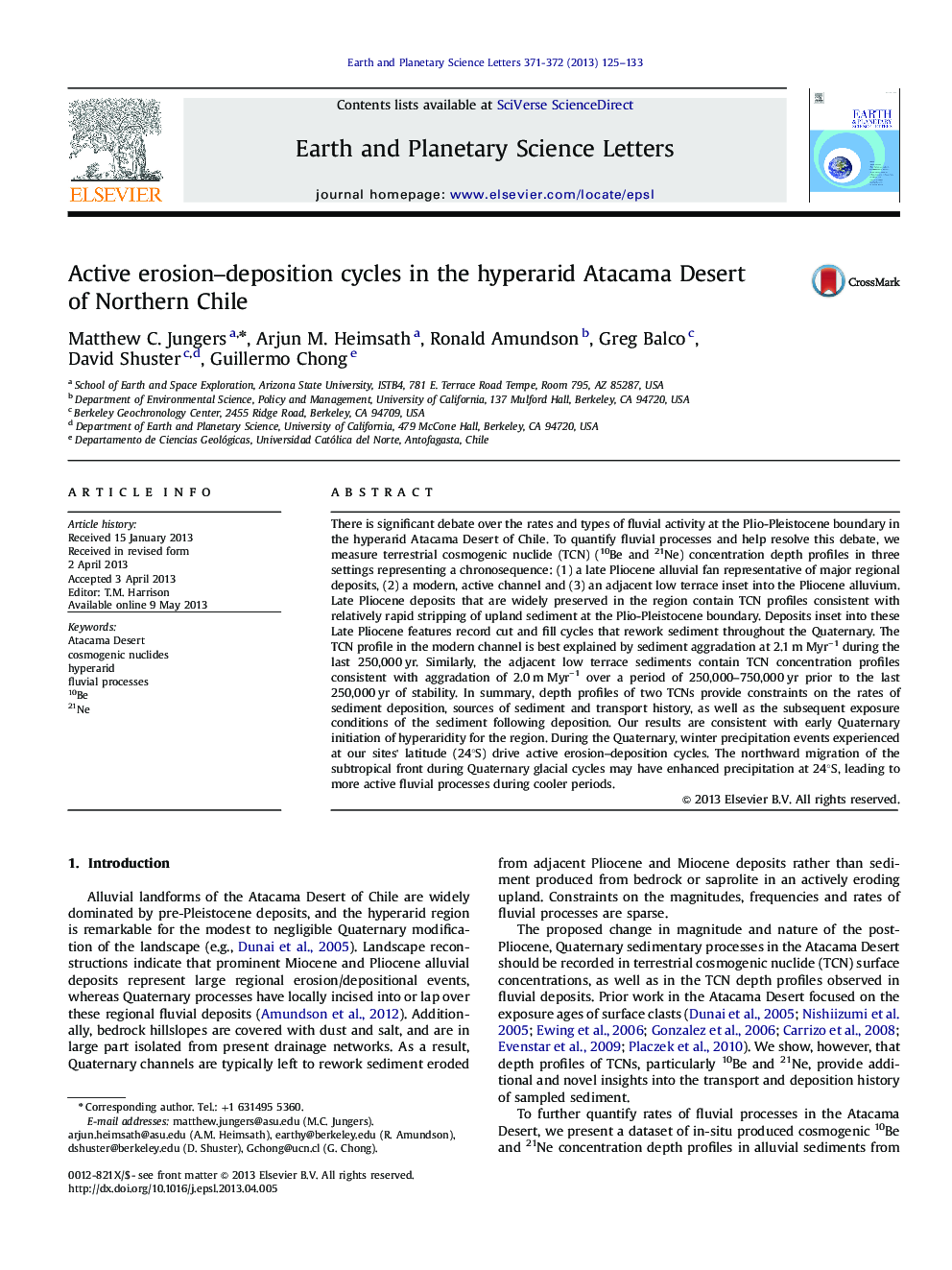| کد مقاله | کد نشریه | سال انتشار | مقاله انگلیسی | نسخه تمام متن |
|---|---|---|---|---|
| 4677217 | 1634783 | 2013 | 9 صفحه PDF | دانلود رایگان |
• We measure 10Be and 21Ne concentration depth profiles in a chronosequence of fluvial landforms in the hyperarid Atacama Desert of Chile.
• We find evidence for active fluvial erosion–deposition cycles through the Quaternary to the present.
• We determine an active, fluvial aggradation rate at our study site of 2.1 m Myr−1.
• Our results are consistent with early Quaternary initiation of hyperaridity in the region.
There is significant debate over the rates and types of fluvial activity at the Plio-Pleistocene boundary in the hyperarid Atacama Desert of Chile. To quantify fluvial processes and help resolve this debate, we measure terrestrial cosmogenic nuclide (TCN) (10Be and 21Ne) concentration depth profiles in three settings representing a chronosequence: (1) a late Pliocene alluvial fan representative of major regional deposits, (2) a modern, active channel and (3) an adjacent low terrace inset into the Pliocene alluvium. Late Pliocene deposits that are widely preserved in the region contain TCN profiles consistent with relatively rapid stripping of upland sediment at the Plio-Pleistocene boundary. Deposits inset into these Late Pliocene features record cut and fill cycles that rework sediment throughout the Quaternary. The TCN profile in the modern channel is best explained by sediment aggradation at 2.1 m Myr−1 during the last 250,000 yr. Similarly, the adjacent low terrace sediments contain TCN concentration profiles consistent with aggradation of 2.0 m Myr−1 over a period of 250,000–750,000 yr prior to the last 250,000 yr of stability. In summary, depth profiles of two TCNs provide constraints on the rates of sediment deposition, sources of sediment and transport history, as well as the subsequent exposure conditions of the sediment following deposition. Our results are consistent with early Quaternary initiation of hyperaridity for the region. During the Quaternary, winter precipitation events experienced at our sites' latitude (24°S) drive active erosion–deposition cycles. The northward migration of the subtropical front during Quaternary glacial cycles may have enhanced precipitation at 24°S, leading to more active fluvial processes during cooler periods.
Journal: Earth and Planetary Science Letters - Volumes 371–372, June 2013, Pages 125–133
